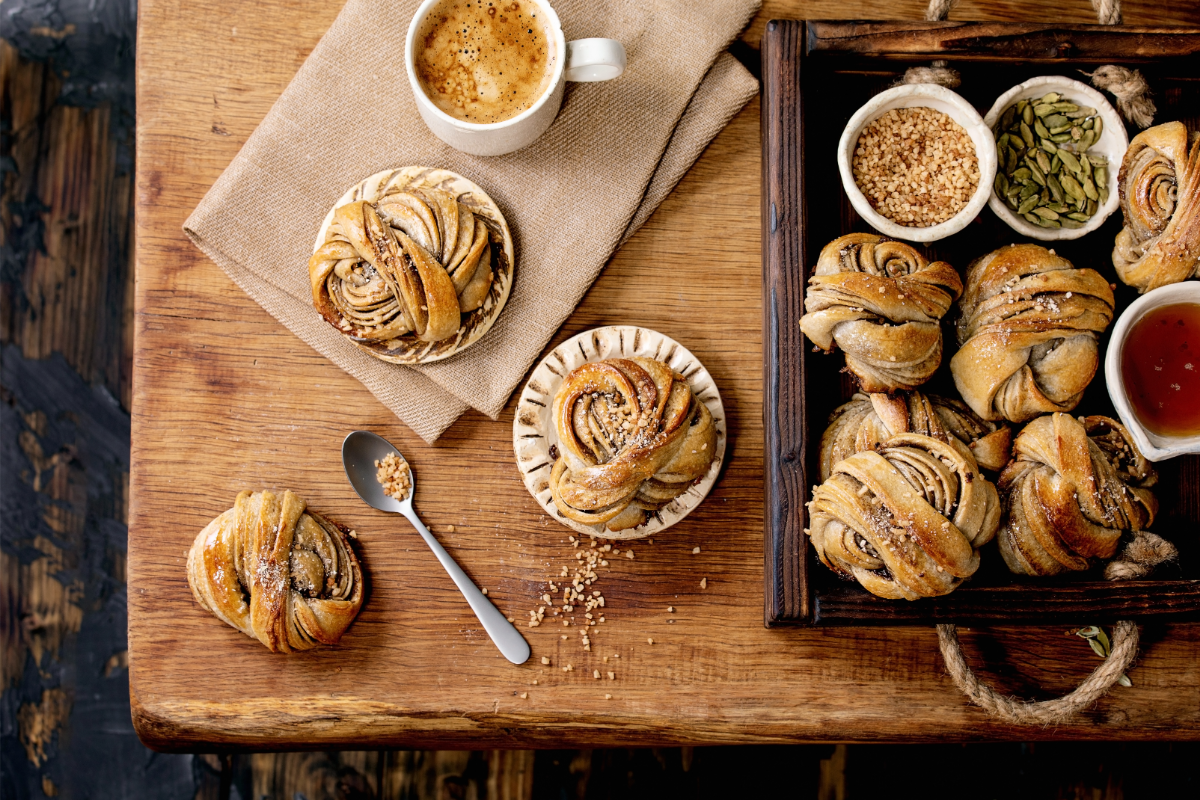Ready for a gourmet adventure that will improve your cooking? Just consider cardamom. This zesty spice may make your food gourmet.
Before trying cardamom-infused recipes and innovations, learn about this aromatic spice. Understanding cardamom’s origins, kinds, and flavors is the first step to cooking with it.
But cardamom’s importance extends beyond cooking. Many culinary cultures use it to add taste and perfume to traditional foods. You can master cardamom in cooking and create harmonious pairings with other tastes that complement its particular taste with these ideas and methods.
Cardamom can enrich savory recipes, sweeten sweets, and cool drinks. With current cardamom recipes and methods, chefs are pushing culinary innovation.
Discover Cardamom’s culinary diversity with us as we create new dishes.
Understanding Cardamom
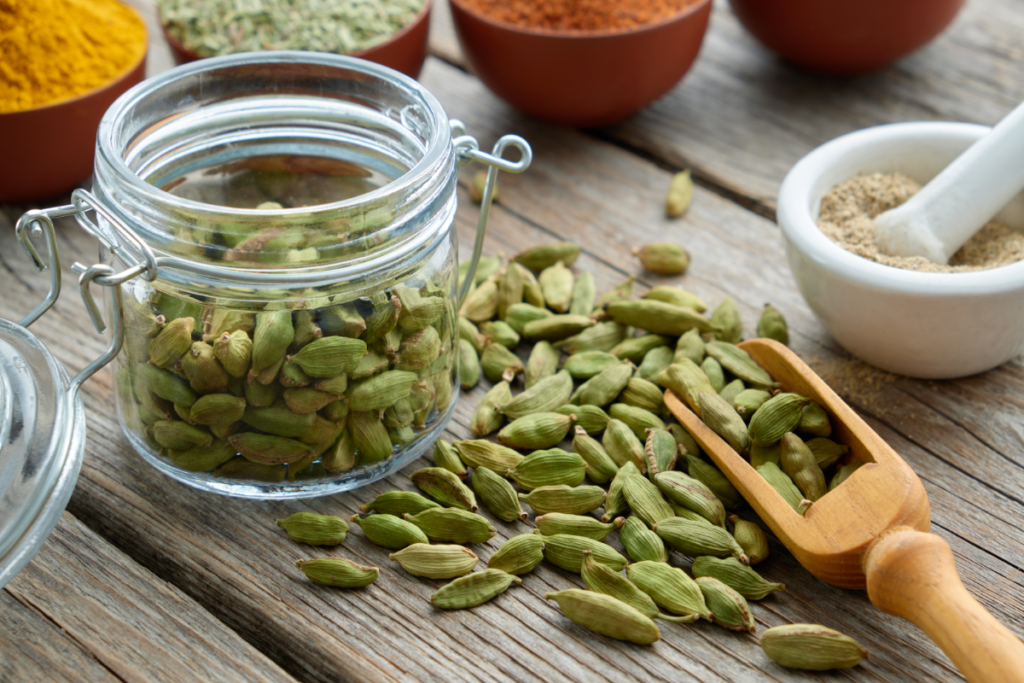
Cardamom is a versatile spice that many have used in cooking for centuries. Understanding the basics of cardamom is essential for anyone who wants to master its use in the kitchen. Green and black cardamom are the primary varieties. Black cardamom tastes smokey and earthy with resin and camphor, whereas green cardamom tastes zesty with lemon and mint.
Cardamom is native to India, but it is now grown in many countries worldwide, including Guatemala, Tanzania, and Sri Lanka. It is a member of the ginger family, and many refer to it as the “queen of spices.” The locals harvest the spice by hand from the dried fruit of the cardamom plant, which contains small seeds that are ground into a powder or used whole in cooking.
The Flavor Profile of Cardamom
The flavor of cardamom is complex and aromatic, with notes of citrus, mint, and spice. It warms the taste and adds richness to foods. The flavor intensity of cardamom varies depending on how we use it. When ground, it releases a more potent flavor, while whole pods add a subtle, delicate flavor to dishes.
Using Cardamom in Cooking
When using cardamom in cooking, it is important to remember that a little goes a long way. Start with a small amount and adjust the seasoning as needed. Cardamom pairs well with other spices, including cinnamon, cloves, and nutmeg. It is also commonly used with ginger, coriander, and cumin in Indian cooking.
Cardamom can flavor various dishes, from baked goods and desserts to savory stews and curries.
Now that you understand the basics of cardamom, you are ready to start experimenting with this versatile spice in your cooking. Whether you are a seasoned chef or a novice in the kitchen, mastering cardamom can add a new dimension to your culinary creations.
Cardamom in Culinary Traditions
Cardamom has been a beloved spice in many culinary traditions across the world for centuries. From Indian curries to Swedish pastries, this aromatic spice has found its way into a diverse range of dishes.
In Indian cuisine, cardamom is a staple in curries, rice dishes, and spiced teas. It is common in masala chai, a popular beverage in India and neighboring countries. In Scandinavian cuisine, cardamom is a key ingredient in traditional pastries, such as the Swedish kardemummabullar (cardamom buns). It is a common ingredient in savory dishes, such as Swedish meatballs.
In Middle Eastern cuisine, cardamom is a common ingredient in spice blends used in savory dishes, such as ras el hanout. It is also used in coffee, giving it a unique and aromatic flavor. In Turkish cuisine, cardamom is a common ingredient in desserts, such as Turkish delight.
Even in ancient times, cardamom was highly prized. Locals use it in medicinal remedies and as a flavoring agent in food and drink. The ancient Greeks and Romans were known to use it in perfumes and incense.
Mastering the Use of Cardamom in the Kitchen
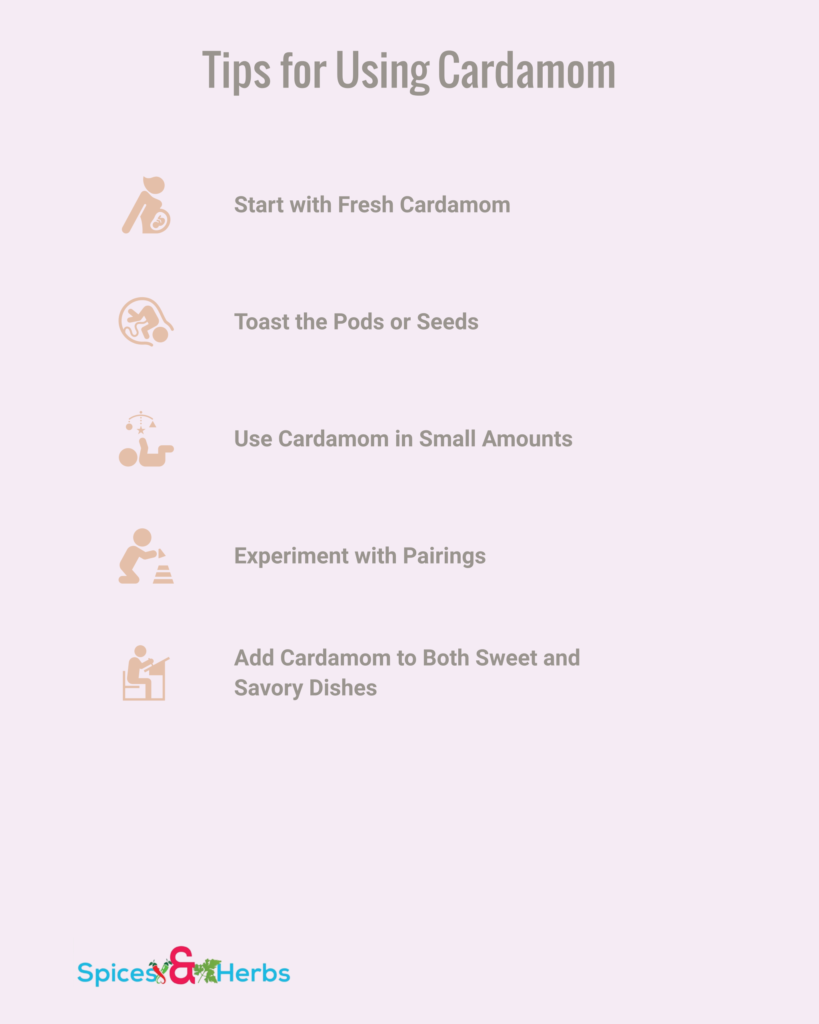
Congratulations, you’ve now gained a solid understanding of cardamom! It’s time to start incorporating this versatile spice into your everyday cooking and mastering its use in the kitchen.
💯Tip 1: Start with Fresh Cardamom
For the best flavor, use fresh cardamom pods or seeds. Look for green cardamom pods that are plump and fragrant. You can also purchase cardamom seeds if you prefer not to use the whole pods.
💯Tip 2: Toast the Pods or Seeds
Before using cardamom in your recipes, consider toasting it to enhance its aroma and flavor. After dry roasting the pods or seeds in a skillet until aromatic, pound them using a mortar and pestle or spice grinder.
💯Tip 3: Use Cardamom in Small Amounts
Cardamom has a strong flavor, so it’s important to use it in small amounts to avoid overpowering your dishes. Start with a pinch and gradually increase until you achieve your desired taste.
💯Tip 4: Experiment with Pairings
Cardamom pairs well with various flavors, so don’t be afraid to experiment with different combinations. Try adding it to dishes that contain citrus fruits, cinnamon, cloves, or vanilla for a delicious and unique flavor profile.
💯Tip 5: Add Cardamom to Both Sweet and Savory Dishes
While cardamom is also a common ingredient in desserts, it can enhance the flavor of savory dishes. Consider adding it to meat rubs, stews, or even grilled vegetables for an unexpected burst of flavor.
Elevate Your Savory Dishes: Cardamom in Main Courses
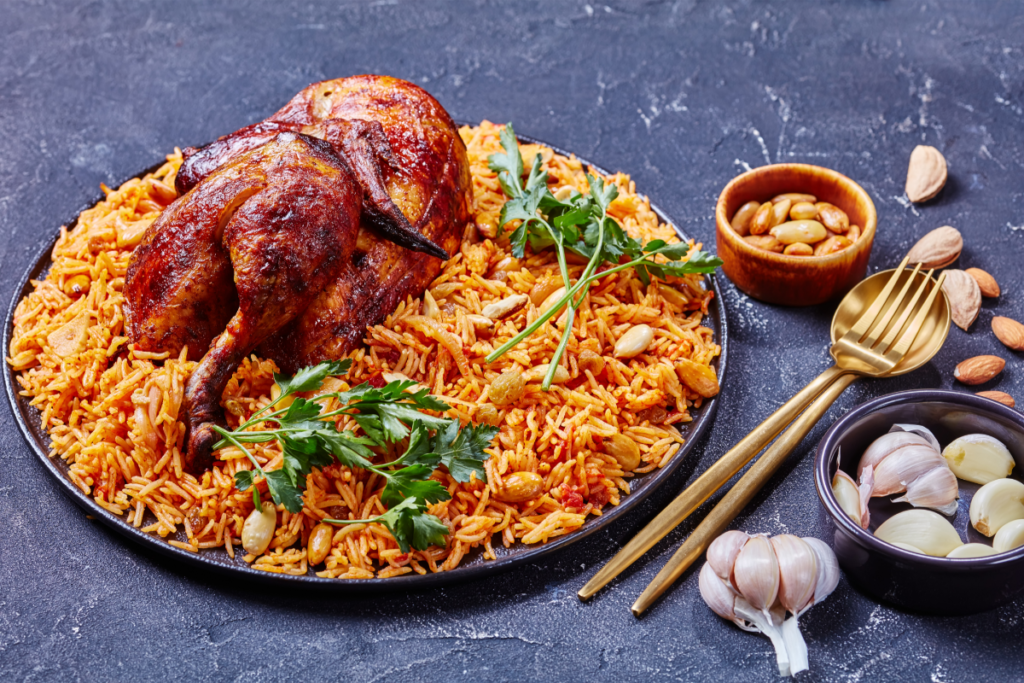
It may surprise you that cardamom may enhance the taste of meats and vegetables in your main course. Here are some innovative recipes and techniques to help you incorporate cardamom into your savory creations:
🍗Spiced Lamb with Cardamom Rice
- Add chopped onions and garlic to pan oil. Cook onions until they are transparent.
- Add ground lamb and cook until browned.
- Add ground cardamom, coriander, cumin, and turmeric. Cook for a few minutes to allow the flavors to meld.
- Stir in diced tomatoes and let simmer for 10-15 minutes.
- Serve over a bed of cardamom-infused rice (prepare rice as normal, but add a pinch of ground cardamom to the water before boiling).
🥘Cardamom-Spiced Chicken Curry
- Add chopped onions and garlic to oil in a big saucepan. Soften onions while cooking.
- Add diced chicken and cook until browned.
- Stir in diced tomatoes, tomato paste, ground cardamom, cinnamon, and ginger. Let simmer for 20-30 minutes.
- Stir in coconut milk and simmer for an additional 10 minutes.
- Over rice, sprinkle with chopped cilantro.
🥗Cardamom-Spiced Roasted Vegetables
- Preheat oven to 400°F.
- Cut your favorite vegetables (sweet potatoes, carrots, and onions) into bite-sized pieces.
- Dress with olive oil, crushed cardamom, cumin, and salt.
- Roast in the oven for 20-25 minutes or until tender vegetables are lightly browned.
- Add flavor to salads or serve as a side.
These are just a few examples of how you can use cardamom to add a new dimension of flavor to your main course dishes. Don’t be afraid to experiment with different combinations and share your culinary creations!
A Sweet Sensation: Cardamom in Desserts
Cardamom-infused pastries will satiate your sweet craving. This versatile spice adds a layer of complexity to your favorite sweet creations. From cakes to cookies, ice creams to puddings, cardamom can transform your desserts from ordinary to extraordinary.
▶Cardamom Cake with Citrus Glaze
Impress your guests with a cardamom cake. It enhances the spice’s unique flavor profile with a hint of citrus in the glaze. To make the cake, add ground cardamom to your favorite vanilla cake recipe. For the glaze, mix powdered sugar, fresh orange juice, and a pinch of cardamom.
▶Cardamom Cookies with Rosewater Glaze
Take your cookies to the next level with the addition of cardamom. Make the dough with butter, sugar, flour, and ground cardamom. Bake and let cool before adding a glaze of powdered sugar, rosewater, and a small amount of cardamom for a floral twist.
▶Cardamom Ice Cream with Pistachios
A creamy and decadent ice cream infused with cardamom is the perfect way to end a meal. Mix heavy cream, milk, sugar, and a pinch of ground cardamom. Freeze until soft-serve consistency, stirring every 30 minutes. Chopped pistachios provide crunch and taste.
▶Cardamom Rice Pudding
For a warm and cozy dessert, try cardamom rice pudding. Cook milk, rice, sugar, and ground cardamom in a saucepan until the rice is soft and the pudding is thick. Sprinkle cinnamon over the top and serve warm.
▶Cardamom and Honey Poached Pears
For a fancy dessert that is surprisingly easy to make, try poached pears with cardamom and honey. In a pot, combine water, honey, and ground cardamom and bring to a boil. Add peeled pears, reduce heat, and let simmer until the pears are tender. Top with honey and serve warm.
- Cardamom adds a unique flavor profile to desserts.
- A hint of citrus or rosewater can enhance the flavor of cardamom in desserts.
- Pistachios and cinnamon complement the taste of cardamom in desserts.
- Cardamom can make ice cream, cakes, cookies, rice pudding, and poached pears.
Spice Up Your Beverages: Cardamom in Drinks
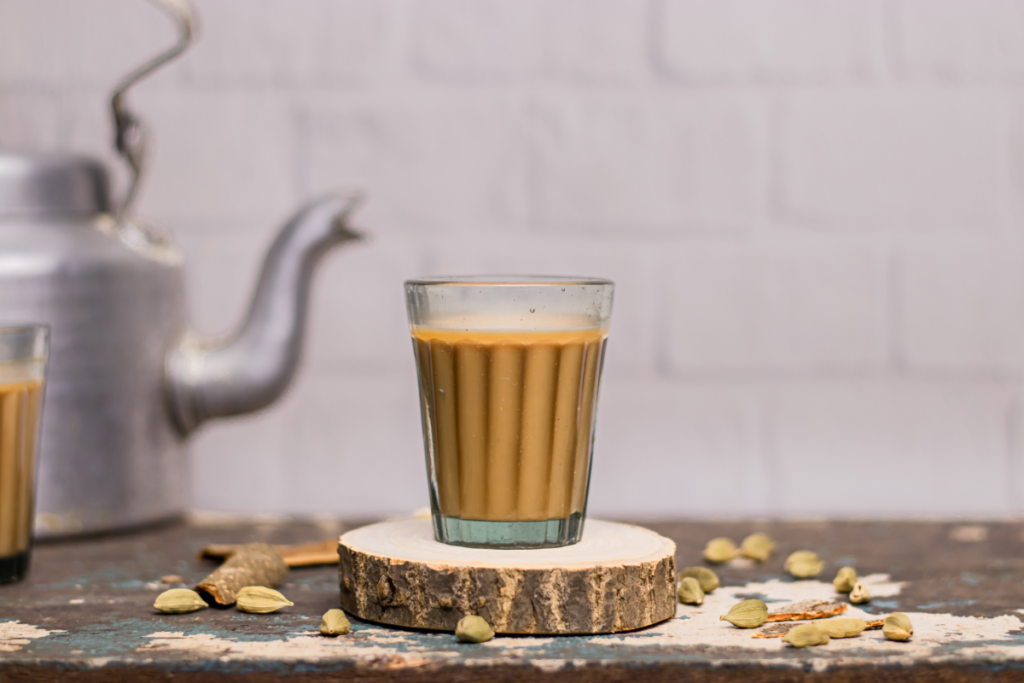
If you thought cardamom was just for cooking, think again! You can incorporate this versatile spice into your drinks to create refreshing and aromatic beverages.
🍵Cardamom Tea
For a soothing, aromatic tea, simply crush a few cardamom pods and add to your cup of tea. You can even steep whole pods in hot water for a few minutes to infuse the flavor.
☕Cardamom Coffee
Elevate your morning coffee by adding a pinch of ground cardamom to your brew. The warm, spicy notes of cardamom will complement the rich, bold flavor of coffee for a delicious and refreshing drink.
🍸Cardamom Cocktails
Why not add a little spice to your cocktail game with cardamom-infused drinks? Mix cardamom syrup with gin or vodka for a unique twist on a classic cocktail. You can also muddle crushed cardamom pods with herbs and fruits to create your signature drink.
You may enhance the taste of your drinks with these creative cardamom applications. Try various mixes to make tasty, fragrant beverages and elevate your cooking!
Beyond the Kitchen: Innovative Uses of Cardamom
Cardamom’s versatility is not just limited to cooking. You can also use it unconventionally, from creating infused oils and spice blends to making beauty products. Here are some innovative uses of cardamom to inspire your culinary creations:
- Create a cardamom-infused oil by pouring olive oil into a jar with a few cracked pods and leaving it for a week. Use the infused oil to add a delightful twist to salads and marinades.
- Add a pinch of ground cardamom to your morning coffee for a refreshing start to your day.
- Incorporate cardamom into your homemade spice blends to create unique flavors for your dishes.
- Create a soothing cardamom tea by brewing crushed cardamom pods with hot water and adding honey and milk to taste.
- Use ground cardamom in facial scrubs to brighten and rejuvenate your skin.
These are just a few examples of the many innovative uses of cardamom. With its unique flavor profile and versatile nature, the possibilities are endless in enhancing your culinary creations.
Exploring Cardamom Variations: Green vs. Black
If you’re a cardamom lover, you may already be familiar with the two most common types: green and black cardamom. Both kinds have similar flavors, yet some important variances exist.
💚Green Cardamom
Green cardamom is the most commonly used type of cardamom in cooking. It tastes sweet and fragrant with lemon and mint notes. It is typical in sweet dishes such as desserts, baked goods, and chai tea.
Green cardamom pods are small and light green, with thin skin that is easy to remove. Inside the pod are small, ground black seeds for use in recipes. The seeds lose their flavor quickly once ground, so it’s best to grind them just before use.
🖤Black Cardamom
Black cardamom, on the other hand, has a smokier and more earthy flavor, with notes of resin and camphor. It is typical in savory dishes such as curries, stews, and biryanis.
Black cardamom pods are larger than green cardamom pods and have tough, dark brown skin that is difficult to remove. Inside the pod are crushed or ground sticky black seeds for recipes. Unlike green cardamom, black cardamom seeds retain their flavor for longer periods, and you can store them for several months.
Now that you understand the differences between green and black cardamom, you can choose the right type for your culinary creations. Experiment with both varieties to discover which one suits your palate and style of cooking.
Cardamom Pairings: Flavors that Complement

Understanding cardamom is not just about its taste but also about the flavors that complement it. Cardamom can improve your cooking when paired with the proper taste.
➡Citrus fruits
Citrus fruits, such as oranges and lemons, bring out the bright and vibrant notes of cardamom. The tartness of the fruits balances the sweetness of the cardamom, creating a harmonious blend of flavors. Add orange or lemon zest with cardamom to your cake or muffin batter for a delicious twist.
➡Cinnamon and cloves
Cinnamon and cloves are warm spices that pair well with cardamom’s earthy notes, making it perfect for spice blends. You can use this combination in your chai tea or apple pie for a fragrant and comforting flavor.
➡Vanilla
Vanilla and cardamom complement each other beautifully. This ingredient accentuates cardamom’s flowery and fruity scent with its sweetness and creaminess. You can use this combination in your ice cream or custard for a delightful dessert.
Cardamom Innovations: Modern Recipes and Techniques
Unleash your creativity and experiment with modern recipes and techniques that showcase cardamom’s versatility in culinary creations. From molecular gastronomy to fusion cuisine, chefs worldwide embrace cardamom’s unique flavor profile to create innovative and exciting dishes.
🍛Elevate Your Breakfast Game
Start your day off right with cardamom-infused breakfast delights. Add cardamom to your morning oats or yogurt for a delicious and energizing kick. Or, indulge in cardamom-spiced pancakes or French toast for a luxurious and aromatic breakfast experience.
🍛Revamp Your Snack Game
Upgrade your snack game with cardamom-infused trail mixes or roasted nuts. The warm and citrusy flavors of cardamom add a delightful twist to classic snack foods. For a sweet treat, try cardamom and chocolate-covered almonds or cashews.
🍛Get Creative with Cocktails
Don’t limit cardamom to tea and coffee; explore its potential to elevate your cocktail game. Mix a cardamom-infused gin and tonic or a cardamom-spiced margarita for a refreshing and aromatic drink experience. For a non-alcoholic option, try cardamom-infused lemonade or sparkling water with a splash of lime.
🍛Take Your Baking to the Next Level
Cardamom’s unique flavor profile makes it the perfect addition to your baking creations. Add it to bread, muffins, or scones for a warm and citrusy twist. Or, indulge in cardamom-spiced cakes, cookies, or pies for a memorable and flavorful dessert experience.
🍛Experiment with Fusion Cuisine
Explore the exciting possibilities of fusion cuisine by combining cardamom with unexpected flavors and ingredients. Try cardamom-infused sushi rolls or cardamom-spiced tacos for a unique and delicious dining experience. Only your imagination limits the possibilities.
- Cardamom-infused oatmeal or yogurt
- Cardamom-spiced pancakes or French toast
- Cardamom-infused trail mix or roasted nuts
- Cardamom and chocolate-covered almonds or cashews
- Cardamom-infused gin and tonics or margaritas
- Cardamom-infused lemonade or sparkling water with lime
- Cardamom-infused bread, muffins, or scones
- Cardamom-spiced cakes, cookies, or pies
- Cardamom-infused sushi rolls or tacos
With these culinary creations and innovations, you can unleash the full potential of cardamom in your cooking and take your dishes to the next level.
Frequently Asked Questions
Q: What does cardamom taste like?
A: Cardamom has a complex flavor that is simultaneously sweet, spicy, and aromatic. Some people often describe it as having hints of lemon, mint, and smoke, with a warming, slightly spicy taste. This unique combination of flavors makes it a versatile spice in savory dishes and sweet desserts.
Q: Is cardamom the same as cinnamon?
A: No, cardamom and cinnamon are not the same. They are distinct spices with unique flavors. Cinnamon tastes sweet and woody with a warm, fragrant scent, while cardamom is aromatic, sweet and spicy with lemon and mint notes. They are used differently in cooking and come from different plants.
Q: What is a substitute for cardamom?
A: In equal proportions, cinnamon and nutmeg or cinnamon and cloves may replace cardamom. These combinations mimic cardamom’s aromatic warmth, though they won’t replicate its exact flavor profile.
Q: Which color of cardamom is best?
The “best” color of cardamom depends on the flavor profile you’re seeking. Green cardamom has a sweeter, more delicate taste and is common in savory and sweet dishes. Black cardamom is smokier and more robust, often used in savory meat and rice dishes. Choose the type that best complements the flavors of your recipe.
Conclusion
You’ve learned about the incredible versatility of cardamom in culinary creations and now know how to elevate your cooking. Understanding the basics of cardamom, exploring its role in culinary traditions,
With cardamom, the possibilities are endless. Experiment with the spice in savory dishes like spiced lamb or aromatic curries. Indulge in sweet sensations by adding cardamom to cakes, cookies, and ice creams.
Infuse cardamom into your drinks to create refreshing and aromatic beverages. Or think beyond traditional cooking and explore unconventional uses of cardamom in infused oils, spice blends, and even beauty products.

